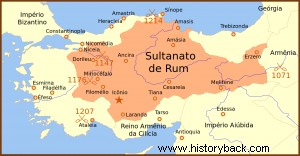
Alexios I Komnenos was a great emperor. He took the helm of the Byzantine Empire in very bad times but he managed, taking advantage of every method and opportunity, to resurrect it, literally. The main opponents were the Normans and the other "Latins" and the Seljuk Turks who dominated a large part of Asia Minor having made Iconium their capital.
After facing the Normans Alexius turned against the Turks. Taking advantage of the First Crusade, he recaptured the coasts of Asia Minor and in 1116 decided to move inland, after he had managed to fend off a Turkish attack in Nicaea (1113) and defeat the Turks at Poimanon. According to his daughter and author of the famous "Alexiada", Anna Komnenis , the emperor's goal was to recover the Icon.
Exact information on the numerical strength of the imperial army does not exist. But what we do know is that the emperor adopted a new tactic against the Turks, the so-called "Faction" . The Parataxi was essentially a large mobile quadrilateral formed by the Byzantine infantry so as not to present an exposed flank to the agile Turkish light cavalry. In the middle of the quadrilateral the conveyances and baggage were placed to be safe, while the cavalry were placed in the corners, but inside, kept as a reserve for counter-attacks. Thus the main shock weapon of the army, the cavalry, was protected from premature attrition.
In this way the Byzantine army moved safely to Philomelion which, after defeating the Turks, it captured by assault. Philomelion (present-day Aksehir) is located near Iconium. The Seljuk Sultan Malik Shah, for his part, gathered a large army to face the Byzantines. Initially the Turkish vanguard approached the Byzantine Faction but failed to stop it.
The next day, however, the sultan arrived in the area with all his forces. The Sultan ordered his forces to simultaneously attack the front and the rear of the Byzantine Front but it does not seem to have achieved anything special. Instead, he accepted the counterattack of the Byzantine cavalry. The first counterattack of the Byzantines did not "break" the Turks.
The second counter-attack, however, led by Nikephoros Bryennius the Younger, the husband of Anna Komneni and son-in-law of the emperor, was directed against the forces personally commanded by the sultan. Bryennius and his men broke the Turkish lines. Malik Shah was almost captured, which would probably have had catalytic consequences. After the heavy defeat, the Turks retreated. But when night fell, the Turks reorganized and launched a night attack against the Byzantine faction.
But again they did not succeed in the slightest. When dawn broke, the stubborn Malik gathered all his forces and attacked the Byzantine quadrilateral from every direction, but was again defeated state by state, and the next day he sent an embassy to the emperor asking for peace on terms dictated by the emperor . Soon, however, the Sultan's brother, Masud, blinded and killed Malik, taking his place and effectively canceling the peace treaty with Alexios.
The battle at Philomelion proved, however, that the Turks were by no means invincible. It only required a disciplined and well-trained force to throw them out of Asia Minor once and for all. Alexius Comnenus's Faction was strongly reminiscent of the four-sided formation adopted by Xenophon's Myrians and thanks to which the Greeks safely crossed the heart of the Persian Empire.

